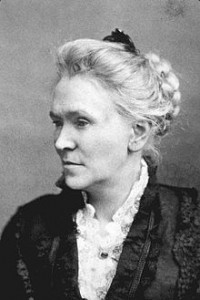Or, at least that’s the tabloid version of the letter. For example, here on Science 2.0, the article reads as follows.
In society, there is a belief that women will be more cooperative than men. In academia, that is not the case, according to a paper in Current Biology. Instead, women in academia are less likely to cooperate than men.
A closer look at the letter, however, shows that it isn’t quite so straightforward. Joyce F. Benenson, Henry Markovits, and Richard Wrangham studied 50 departments of psychology in the United States to see if there were different publishing patterns for men and women.
 There was no difference between men and women full professors in terms of their likelihood to co-author papers with other full professors. There was also no difference between men’s and women’s track records for publishing with junior colleagues of the opposite sex.
There was no difference between men and women full professors in terms of their likelihood to co-author papers with other full professors. There was also no difference between men’s and women’s track records for publishing with junior colleagues of the opposite sex.
No gender differences were obtained when comparing publications with other senior professors or when comparing senior professors with other-gender junior professors.
The difference that was found, however, involved publishing with junior colleagues of the same sex. Men had more same-sex co-authorship across ranks than women did.
Male full professors were more likely than female full professors to co-author publications with a same-gender assistant professor. This is consistent with a tendency for men to cooperate more than women with same-sex individuals of differing rank.
Maybe there’s something to be uncovered here, but I’m concerned that we are seeing a hasty generalization.
Is co-authorship about cooperation?
The research uses co-authorship to measure cooperation.
Using numbers of co-authored, peer-reviewed publications as an objective measure of cooperation and professorial status as a measure of rank, the researchers calculated the likelihood of co-authorship with respect to the number of available professors in the same department.
In some technical sense, co-authorship of course does reflect cooperation, at least when cooperation is taken to mean simply working together.
But the claims and discussion around this article are confounding this technical meaning of cooperation with the goodwill that is part of the meaning of the word cooperative — and, indeed, that is often part of the idiomatic use of the word cooperate. A belief that women will be more cooperative is a belief that women go into situations with more willingness than men to show goodwill or be helpful. The claim that men cooperate more inevitably assigns to them beneficence.
Do the co-authorship patterns revealed by this research really show women to have less goodwill than men; does it show that they are less cooperative? Of course not. But there is a risk that this article will be used to claim that—lo and behold—women aren’t nearly as cooperative as you once thought.
Indeed, Professor Benenson encourages this, according to a quote in Science 2.0. “In ordinary life we often think of women as being more cooperative and friendly with each other than men are, but this is not true when hierarchy enters the picture.” That’s a difficult claim to understand when she and her colleagues write in their letter that they would not expect any differences between male and female professors when it comes to collaborating with students. How is that not part of a hierarchy?
It is a mistake to think that co-authorship reveals goodwill, or an attitude of helpfulness or a desire to work together towards a common goal. The nature of science is such that none of these things can be reliably inferred from co-authorship.
Why not? It’s because authorship on papers sometimes shows who actually did the work. But only sometimes.
Authorship can also be determined by self-promotion and negotiation—two skills which men perform more successfully than women. By way of anecdotal elaboration, consider Declining Courtesy Authorships, in which a woman academic tells of asking to have her name removed from papers to which she did not contribute, to the horror of her male colleagues.
The Matilda Effect
In fact, it is so well known that women are routinely slighted in lists of authors that the phenomenon has a name, the Matilda effect, named after suffragist Matilda J. Gage (pictured above - image credit Wikipedia). The Matilda effect is the opposite of the Matthew effect. In the latter, those who have much, get more. In the former, those who have little, get less.
For whosoever hath, to him shall be given, and he shall have more abundance; but whosoever hath not, from him shall be taken away even that he hath. (Matthew 13:12)
Matthew would have hit the nail on the head if he had only used her and she in the second phrase. Women, already in weak positions in science, routinely are under-credited or under-attributed for their contributions and discoveries.
A recent study on the role of gender in scholarly authorship shows that women are disproportionately absent from the prominent final position on scientific articles — a criterion often used when awarding grants or promotions.
Because of the Matilda effect and all that’s behind it, the absence of co-authorship cannot be taken to imply that two people have not worked together, nor does it demonstrate that they have not cooperated and it certainly does not demonstrate a lack of friendliness. For all we know, the women professors are so friendly and cooperative that they promote their junior women colleagues by letting them take single authorship on the papers.
Is Cooperation Increasing?
Co-authorship is increasing in science. The average number of authors per paper has increased from 3.8 to 4.5 over the past several years. There surely are many legitimate reasons for this, such as the increasing size of externally funded projects. It is entirely plausible that growth in the number of authors reflects an upswing in genuine cooperation.
However, the increase in the average number of authors probably also follows in part from the publish or perish culture of modern university life. The pressure on academics to publish more and more and more is enormous, and it’s deeply entrenched, as I noted in A funding scheme that turns professors into typing monkeys.
Physicists, by the way, must be extremely cooperative folks. The CERN particle accelerator gave rise to 110 articles in 2011 that had over 1,000 authors each. And there probably aren’t many women among them—presumably showing how uncooperative women physicists must be.
I don’t want to underplay the importance of identifying differences in publishing activity. Co-authorship patterns are important to bring out. But in this case, the conclusions overreach.
Of course there are differences in the collaboration patterns of men and women. But there are many other differences in the daily lives of men and women in research environments—differences that are relevant for publication and authorship patterns.
The idea that independent evidence of a lack of cooperation between women of different ranks is affirmed by looking at publication patterns in one field, in a few departments, based on papers with exactly two authors who are both in the same academic department, without considering any other aspects of the academic lives of women researchers seems like a methodology that, frankly, is too clever by half.
Originally published on Curt-Rice.com







Comments